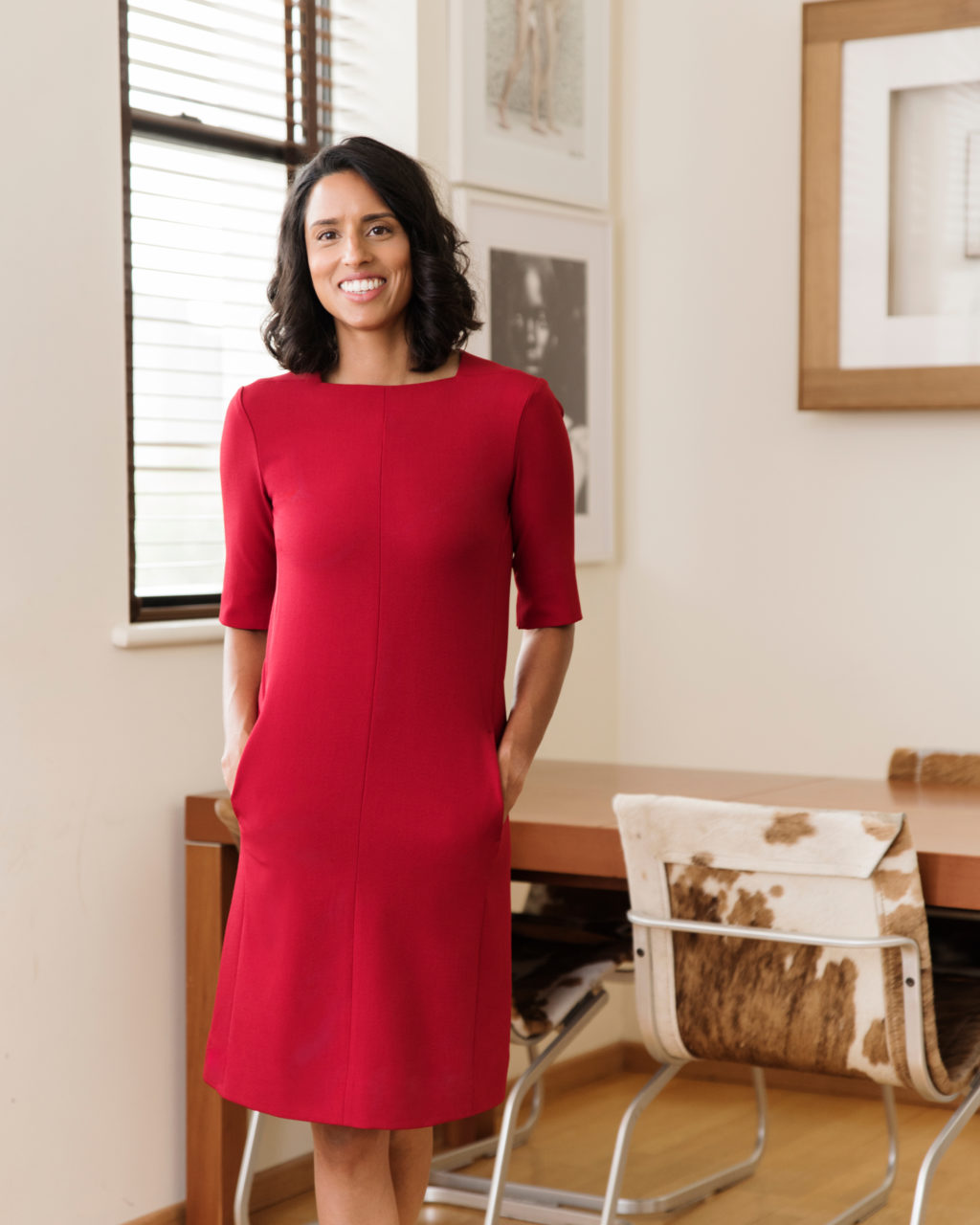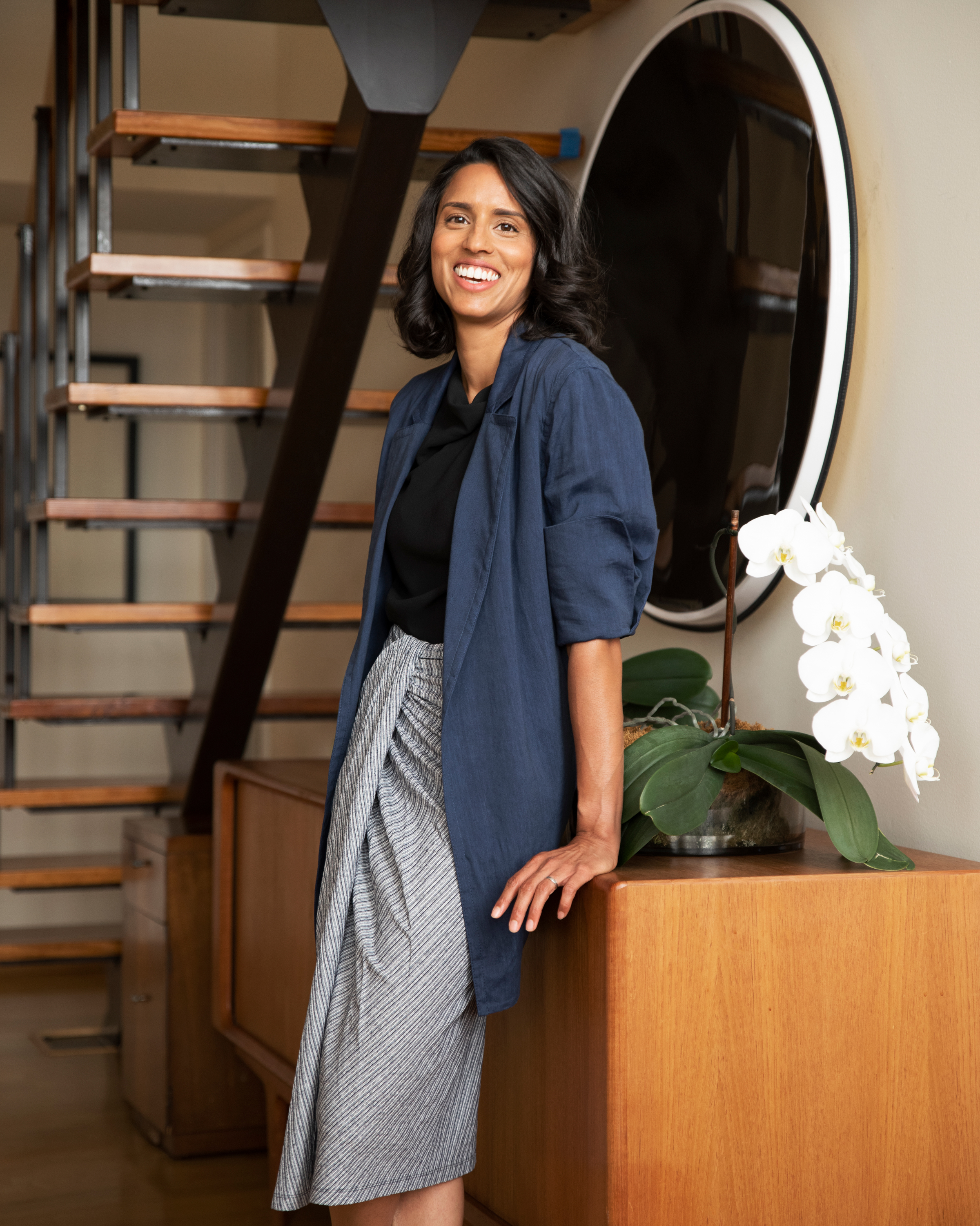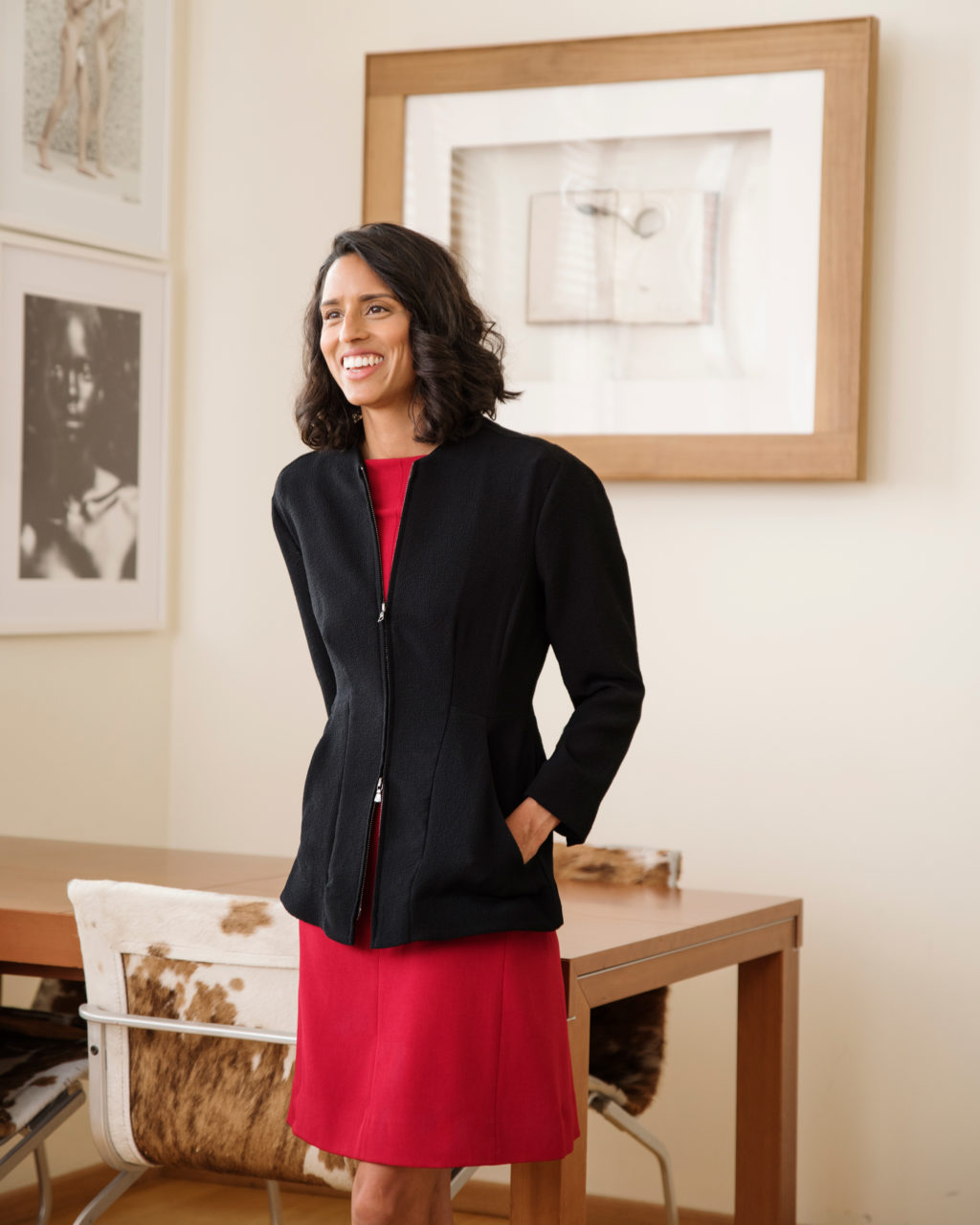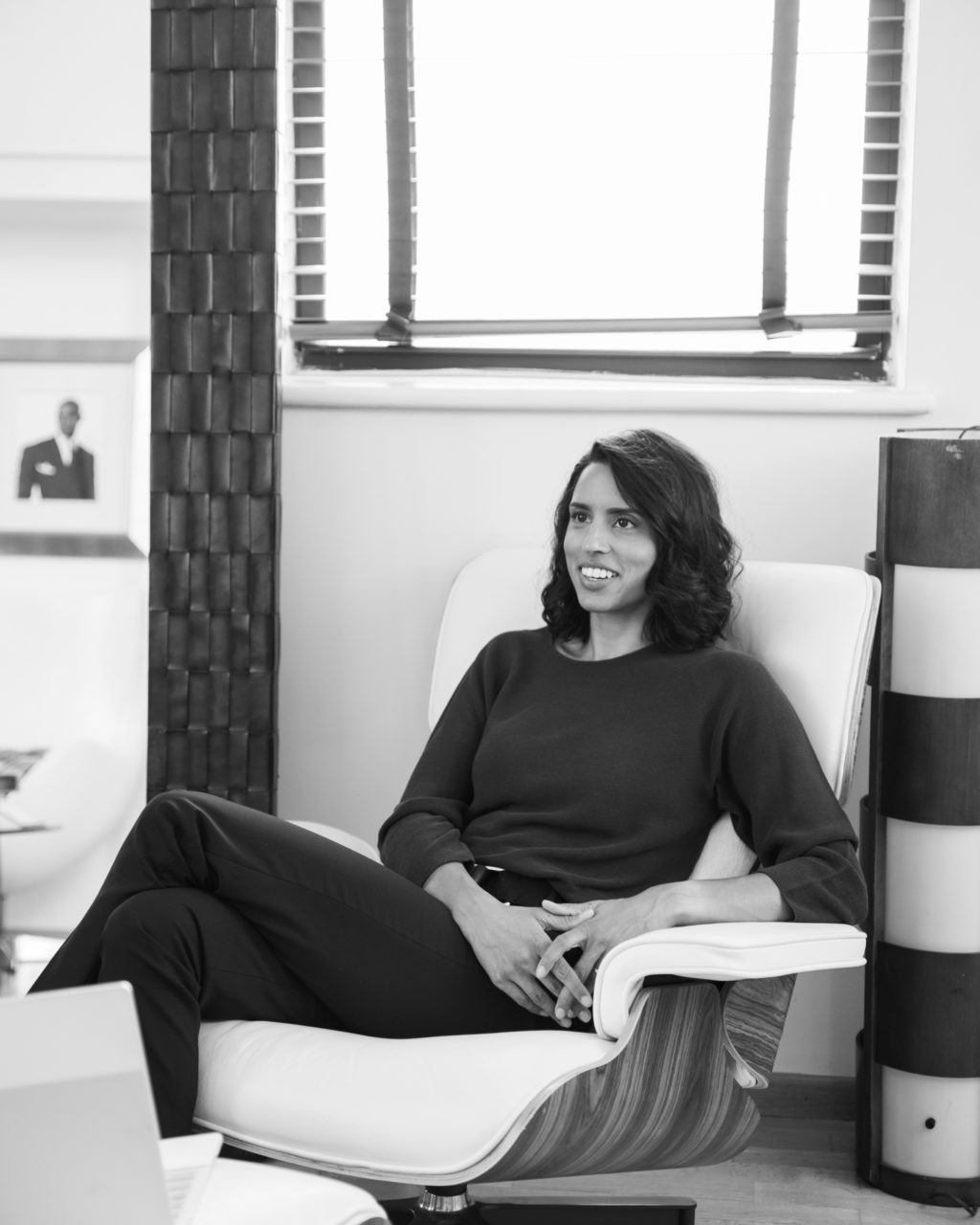For Meenal Lele, Keeping Her Child Safe Became a Full-Time Job
August 09, 2019 | Filed in: Woman of the Week
When Meenal Lele’s oldest son developed food allergies, she did what any good chemical engineer would do: She dove into the data. Within the same month, a landmark study found that many allergies can be prevented by introducing allergenic foods into a baby’s diet during a critical window of time in their first year. For Lele’s first child, it was too late. But when she had her second, she was determined not to repeat the same mistake—only to realize how complicated the food introduction process could be. That’s when she got the idea for Lil Mixins: powdered foods that can be easily stirred into baby food in the correct amounts. Here, she talks about finding her niche between science and business, starting a company from the ground up, and why being the “cool kid” is overrated.
Want more M.M.? Sign up for our newsletter.
I THINK THAT WHEN YOU FEEL LIKE SOMETHING IS OWED TO YOU, it’s easy to get exasperated when you don’t get it. In my family, it was the opposite. There was never an expectation that anything would come easily, or be handed to us. My parents are both immigrants, and when they came here from India, they had to start from scratch. They modeled hard work for us.
MY MOM IS A CHEMIST AND MY DAD IS AN ELECTRICAL ENGINEER. I studied chemical engineering at Penn, and I originally wanted to go into pharma. I loved the idea of making people’s lives healthier, but I never had the patience to become a doctor. I was more interested in the business of science. After I got my degree, I went into consulting, but it wasn’t the best fit. I realized I had to quit when I was in a meeting one day where we were discussing how to increase the uptake of anti-psychotics in children. I thought, “I’m out. I can’t be a part of this.”

Meenal wears the Emily dress.
AFTER I LEFT THAT JOB, I got an opportunity through some of my former teachers at Penn to run operations at a medical device startup. They said, “You don’t need to know anything. You just need to work really hard and not get paid that much.” And I figured, “Cool, I can do that. I’m 24.” Creating a new medical device also aligned with my interests. To me, it’s all well and good to discover new things, but how do you get those things into the hands of people who need them? I’ve always loved figuring out operations and supply chains.
I WAS NEVER THE COOL KID. It just doesn’t occur to me to worry about what other people think about me. In cases where I should be concerned about how society feels, or what the social norms are, I just don’t get it. This can definitely be a weakness when I’m struggling to understand why other people are reacting so emotionally to something. I still have emotions, and I feel them, but I think that things roll off my back a bit more easily. And as a kid who always did my own thing, it helped that I didn’t worry about fitting in.
WORKING AT THE MEDICAL DEVICE COMPANY was a fascinating experience. When I started, it was just me and the CEO. The doctor who had designed the device just had a drawing of a product on a napkin. And we built the company around that. I had so much responsibility, and I have no idea why they gave it to me at that age. I was our entire finance department. I was our entire marketing department. I eventually became our entire clinical affairs department as well. I designed the training protocols and then trained thousands of sales reps across the country. I designed several clinical studies that proved that our product worked. It still shocks me that our CEO let me do all of that. I really grew, and I got to understand that my strength is at the nexus of science and marketing. I know how to take a very complicated concept and explain it to laypeople, and then have them turn around and talk to doctors about it.

Meenal wears the Minetta skirt, the Imogen jacket, and the Rowling top.
OF COURSE, IT WAS DEFINITELY SCARY, having a lot of responsibility at such a young age. Every time I’d be given something new, I’d be like, “Oh, my god, I have no idea how to do this. If I get it wrong, I could waste millions of dollars and sink other people’s jobs.” Then I’d calm down and tell myself, “Okay, one step at a time. All I have to do is find someone else who has figured this out, and then replicate what they did.” I am really, really quick to ask someone for help. There’s always someone who’s happy to give advice, or an expert you can pay. They’re not going to do the work for you, but they can provide a template.
WHEN I GOT MARRIED AND HAD MY FIRST SON, work got really hard, in terms of balance. I was doing sales, so I was traveling three or four days a week. I have pumped milk in every place you can think of—Amtrak bathrooms, you name it.
MY FIRST SON ALSO ENDED UP WITH A TON OF FOOD ALLERGIES. A week after his first visit to the emergency room, a huge study about food allergies came out, and I was so angry. If I had known that the best way to prevent allergies is to do early introduction of certain foods, then we would have done it. We now know that kids should get about 100 servings of each type of food before they turn one, but for us, it was too late, and that was incredibly frustrating. We felt like terrible parents. It sucks to have your kid be sick, going to the E.R. all the time. And what drives me crazy is that I feel like there’s something I could have done.

Meenal wears the Emily dress and the Higgins Jacket.
WHEN I HAD MY SECOND SON, we were adamant: We had the information, and we were going to make sure we prevented these allergies. Chemical engineering overlaps a lot with food science, cooking, and chemistry. So I started reading food science journals, looking for data. And that’s when I realized how difficult the introduction process was. When someone tells you, “Okay, feed your baby this amount of egg two or three times a week,” it sounds easy enough. But then you’re like, “Wait. You’re telling me to bake an egg into muffins, but how do I know how much egg is in each muffin that I just baked? Did it distribute evenly? How do I know that to be true? I can’t do nutritional analysis on every batch I make.” Or with nuts, think about peanut butter — it’s thick and sticky, and that can choke a baby. For me, having the right information and executing on it was critical. It could be the difference between my kid having a lifelong allergy or not. And that’s when it dawned on me: Why are we making this so difficult for parents? If we can create a product to prevent some number of people from going through what we’ve had to do for our first son, we should.
ANOTHER CONCERN FOR ME was that I didn’t want allergens contaminating my cookware or my clothes. I wanted them contained in one space so that I wouldn’t give my older son a reaction while I was introducing foods to my younger son. It was an insurmountable amount of work. But that’s what gave me the idea of creating powdered products that you could just add to baby food.
BECAUSE MY CHILD HAS THIS ISSUE, I never lose sight of what I’m trying to help people avoid. My younger son doesn’t have any food allergies, but my older son has all of them. He just turned five and got retested, and all of his numbers got worse instead of better. This means he probably has these allergies for life. I know that every parent makes mistakes, but you hope your mistakes are mild enough and don’t cause years and years of E.R. visits.
I STARTED WORKING ON LIL MIXINS WHILE I STILL HAD A FULL-TIME JOB. When I told my bosses what I was doing, they were proud, “Okay, as long as it doesn’t interfere with your work here, we’re happy to support you. All we ask in return is that if you decide to take it full time, you give us three months’ notice.” And that’s what I did. I raised enough money to get things off the ground, and in February I left my old job.

Meenal wears the Chadwick top, the Mejia pant, and the D-Ring belt.
THE MOMENT I REALIZED THAT LIL MIXINS COULD BE A BIG BUSINESS was last November. I got a little booth at the American Academy of Pediatrics, which is the biggest national meeting of pediatricians, and showed people the product. And a ton of doctors said, “Oh yeah, that’s something I could recommend to my patients.” The product itself is just real food in powder form. It took some science to create it, because you don’t want it to clump or distribute unevenly, but there’s no additives or preservatives. It’s simple and inexpensive, so a doctor can feel good about recommending it.
I STRONGLY BELIEVE THAT FIVE YEARS FROM NOW, every parent will be doing some version of early food introduction. Nobody wants their kid to be sick, and if there’s an easy way to prevent that, they would. It’s such a no-brainer.
AT THE SAME TIME, I HAVE DAYS WHEN I WONDER IF MY BUSINESS WILL MAKE IT. Maybe I’ve read too many articles about how women only get 2 percent of venture capital funding. But I do have a sneaking suspicion that venture capital firms look at me and don’t see what they think a successful entrepreneur would look like. Instead, when they see me and hear the mom story, they think, “Oh, cute, a multi-level-marketing mom business. I’m going to give this money to a 24-year-old guy in Silicon Valley instead.” It’s a challenge.
IN ENGINEERING, I’VE ALWAYS WORKED WITH 90 PERCENT MEN. And my theory in getting dressed for male-dominated environments is that you have to look good enough to stop thinking about what you’re wearing, but not so good that your colleagues start thinking about what you’re wearing. I want to stay neutral. When I get dressed, I want no one to notice what I’m wearing. My go-to outfit is cropped pants, maybe in red or blue, a cream shirt, and a black or navy blazer. I feel like it’s a perfectly nondescript look. Someone once explained it to me as the news anchor look. You want to look nice, but not have your outfit be so interesting that it distracts from what you’re saying.
Photographs by Matthew Priestley. Styling by Sam Michel.





